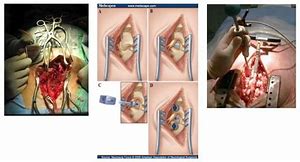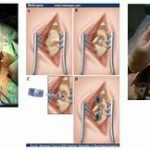Whispered Spinal Surgery Advances Secrets
Undoubtedly there are many kinds of surgeries, but it’s always far better to see a doctor before going for it. As a consequence, you might feel like surgery is a poor idea yet think there aren’t any other choices. Minimally invasive surgery may have a substantial improvement in pain, infection risk and period of hospital stay. Spine surgery has come a very long way from that point. It’s important to recognize that minimally invasive spine surgery isn’t an acceptable treatment option in every situation.
In chronic situations, surgery may be asked to deal with the status. Although not everybody is a candidate for minimally invasive surgery, the huge majority might be treated with muscle-sparing practices. Minimally invasive spine surgery is just one of the biggest advancements in the area of spine surgery over the past ten years.
No surgery does not have any risks or side results. In some instances, minimally invasive surgery might not be as secure or effective as traditional open surgery, so always seek advice from your doctor about your choices. Minimally invasive spine surgery, also called MISS, does not have any particular meaning or definition.
The spine isn’t a single site. Modern surgery techniques and a clearer understanding of how it works allow surgeons to relieve pain and return patients to the same level of activity they were used to. When considering surgery, make certain you find a professional spine (orthopedic or neurosurgical) surgeon, and receive a second opinion.
The Good, the Bad and Spinal Surgery Advances
Complications during and following surgery are still a tremendous threat, though. Spinal stenosis does have a tendency to progress with ongoing degenerative alterations. It is a general term that is used to describe a group of spinal conditions. It is the compression of spinal nerves caused by narrowing of spinal canal and it is one of the common causes of low back pain. It is the most common spinal condition leading to surgery in the elderly patient. Thoracic spinal stenosis is far less common.
The Hidden Truth on Spinal Surgery Advances
Sometimes surgery is needed for spinal compression fractures, regardless of the cause. Surgery, along with Anesthesia, is the essential terms in the discipline of medicine. Spinal surgery is utilized to correct issues in the spine which don’t respond to more conservative, non-surgical treatments and that severely impair a patient’s capacity to do activities of everyday living. Feel free to create an appointment if you are thinking about having spinal surgery and want to learn whether you might be a candidate for the robot. Minimally invasive spinal surgery, also called MISS, is a sort of spine surgery that’s performed through small incisions when using a specialized hollow tube known as a tubular retractor.
For lots of people, however, surgery might be the ideal option to take care of the pain. Fusion surgeries generally have low success rates, which is exactly why so many people today are looking for an option. Other surgeries may involve a little incision and standard anesthesia, but recovery times are a lot more limited. Spinal surgery is also getting more common. It can be one of the most challenging and risky types of surgery that patients require. Robotic Spinal Surgery is among the most recent advances in spinal surgery.
Surgery can halt the progression of the problem. If you can prevent scoliosis surgery, you need to. Surgery is a significant but serious alternative for the treatment of spinal difficulties. To decide on the degree to which ambulatory disc surgery has started to replace inpatient disc surgery. Cervical disc replacement surgery has shown promising results once the patient doesn’t have severe arthritis and the remainder of the cervical spine is in good shape.
If You Read Nothing Else Today, Read This Report on Spinal Surgery Advances
All treatment and outcome results are unique to the individual patient. Generally, there are two sorts of treatments, either you’ll be able to elect for natural treatments for cervical spinal stenosis and lumbar stenosis or you could have surgery. The particular treatment recommended by your physician will rely on the seriousness of the pain and how lumbar stenosis is affecting your usual lifestyle. There are 3 ways for therapy like surgery, conservative therapy and various remedies. In some instances, non-operative therapies, which may include things like treatments like pain injections, or classic spine surgery might still be the very best approach.
For the surgery to be effective, pain has to be originating from a particular disc only and nothing else. Pain in the vicinity of the neck is a fairly common condition. Back and neck pain is a truth of life for a lot of people. The pain could possibly be radicular, following the traditional neurologic pathways. Choosing Spinal Cord Stimulation Patients that are considered for SCS have generally had chronic pain for at least a year. Thus, there are lots of indicators of the spinal stenosis.


